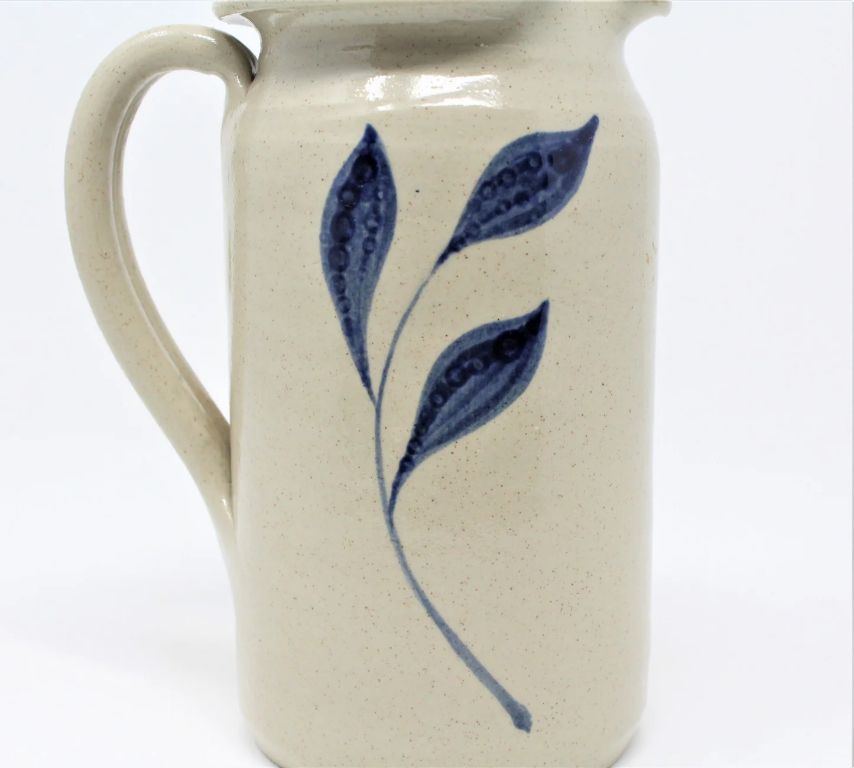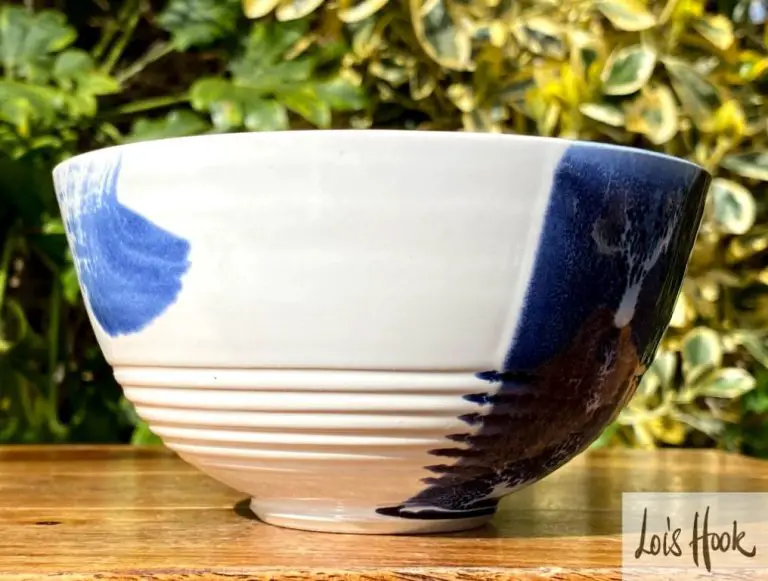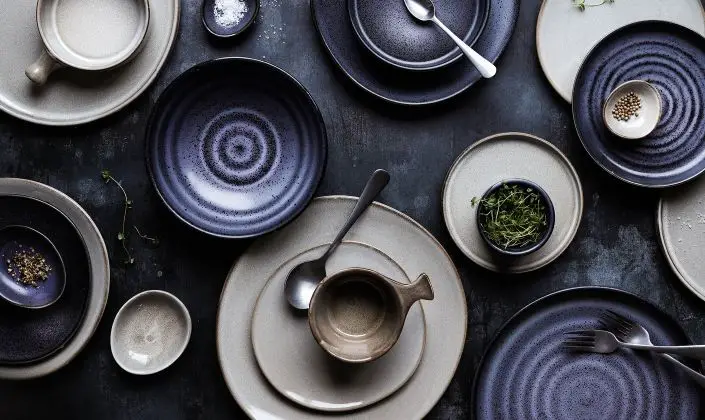Do They Still Make Williamsburg Pottery?
Williamsburg Pottery was founded in 1938 by James Maloney in Williamsburg, Virginia. It quickly became known for its signature blue and white designs on dishware and other household items. By the 1960s, Williamsburg Pottery had reached the height of popularity, with its products sold in major department stores across the country. The pottery came to represent classic Americana style and nostalgia. However, by the 1990s, Williamsburg Pottery had largely disappeared from the market. The company declared bankruptcy in 1997 and the original factory closed. While Williamsburg Pottery maintains a legacy as one of the most recognizable American pottery brands, many wonder if it is still being produced today after the original company shut down.
Founding and Early Years
The Williamsburg Pottery Factory was founded in 1938 by James E. Maloney as a small pottery workshop (Source). Maloney had learned pottery skills while working at Colonial Williamsburg, and he wanted to produce pottery in the 17th-18th century style.
In the early years, Maloney made pottery by hand on a potter’s wheel using local Virginia clay. The pottery featured simple salt-glazed designs in earthy colors like blues, greens, browns, and grays (Source). Some of the early pottery shapes included pitchers, bowls, mugs, and vases.
The pottery was initially sold onsite and at some local shops. As word spread of Maloney’s quality craftsmanship, demand grew rapidly. By the 1950s, the Williamsburg Pottery Factory had expanded into a large-scale operation with over 200 employees. They began using molds to mass produce the popular pottery lines and were distributing along the East Coast.
Height of Popularity
The Williamsburg Pottery Factory reached the height of its popularity in the 1970s and 1980s when it became a hugely popular tourist destination. Over 3.5 million visitors came to the massive complex each year during this time period.1 Annual sales exceeded $100 million a year, and the Pottery employed over 700 people.
The Pottery was well known for its unique and iconic designs during this era. Classic blue and white pottery was mass produced along with popular ceramic items like mugs, ashtrays, and figurines. Kitschy novelty designs and Americana themes were prevalent. The Pottery also sold a wide range of other merchandise like furniture, linens, and home decor.
A major factor in the Pottery’s success was brand ambassador Jimmy Maloney. Maloney starred in over 1,000 television commercials and billboards, always sporting his trademark straw hat. His folksy persona and catchphrase “Ole!” made him into a celebrity spokesperson. Maloney cultivated an image of the Pottery as a down-home, bargain-friendly shop evoking nostalgia for a simpler time.
Recent History
In 1990, the Williamsburg Pottery Factory was sold to Malcolm Glaser, who continued production throughout the 1990s. However, it began a decline in the 1990s with the rapid growth of other shopping venues on Route 60 closer to Williamsburg, and struggled with the death of its founder in 1998 (https://en.wikipedia.org/wiki/Williamsburg_Pottery_Factory).
Through the 2000s, the pottery continued to struggle to attract customers. According to a customer review on Tripadvisor, “The Pottery Factory shut down November 2011 due to lack of interest of our shoppers and competition with nearby outlets” (https://www.tripadvisor.com/ShowUserReviews-g58313-d554615-r171600482-Williamsburg_Pottery-Williamsburg_Virginia.html). After over 60 years in business, the iconic Williamsburg Pottery Factory eventually closed its doors in 2010.
Attempted Revivals
The original Pottery closed its doors in 2005 after more than 75 years of operations. This left many fans disappointed and yearning for its return. There were a few attempts to reopen the iconic store by members of the founding Glaser family.
In 2007, Joel Glaser, the grandson of founder William Glaser, reopened a downsized version called The Pottery Factory. However, it only remained open for a couple years before closing again in 2009 [1].
Some Pottery devotees took matters into their own hands. In 2011, two fans launched crowdfunding campaigns on Kickstarter and IndieGoGo seeking investments to buy and reopen the shuttered Pottery buildings. While gaining some media attention, the campaigns failed to reach their lofty fundraising goals [2].
These initial revival attempts showed there was still interest and demand for the iconic Pottery brand. But it would take a few more years before a full-scale reopening could be achieved.
Collectors Market Today
Vintage Williamsburg pottery has become highly collectible, with rare and valuable pieces commanding premium prices among antique dealers and collectors. The pottery’s kitschy, retro-Americana aesthetic combined with its handmade craftsmanship make it appealing to mid-century design enthusiasts.
Some of the most coveted and expensive Williamsburg pieces include:
- Early jugs and vases from the 1930s-1950s marked with the “VP” Williamsburg Pottery stamp.
- Sets of dinnerware and serving pieces, especially in rare colors and patterns.
- Whimsical cookie jars and figurines depicting people, animals or scenes.
- Stoneware with hand-painted motifs like bluebirds, strawberries and farm animals.
- Collaborations with popular artists and designers from the ’50s-’70s.

Pristine examples in mint condition and rarities like prototypes can sell for hundreds or even thousands of dollars. More common pieces like mugs, bowls and planters tend to sell for $20-100 depending on age, design and condition.
Legacy and Influence
The Williamsburg Pottery had a significant impact on ceramic arts and pottery, inspiring many artisans and potters with its unique glazes and styles. Founded in 1938, the pottery produced pottery and ceramics using traditional colonial techniques and glazes like salt glaze (Wikipedia, 2023). The pottery became known for its signature blue cobalt glaze, developed by founder James Maloney, which gave the pottery’s products a distinctive aesthetic.
The pottery also made many pop culture appearances over the years. It was featured on the TV show Mork & Mindy in the late 1970s and early 1980s. Many tourists visiting Colonial Williamsburg also made a stop at the iconic giant teapot outside the Williamsburg Pottery. The pottery’s products even appeared in the 1994 film Forrest Gump (Wikipedia, 2023).
Today the Williamsburg Pottery evokes a strong sense of nostalgia for many who grew up with its products or visited the store. “My grandmother collected Williamsburg Pottery,” wrote one customer. “It brings back such fond memories for me” (WilliamsburgPottery.com, 2023). The pottery became a cherished part of Americana and its legacy lives on through the collectors market and small-scale revivals of its style and products.
Small Scale Revivals
While large scale production has ceased, there have been some limited edition runs of Williamsburg Pottery produced sporadically in recent years. These revival pieces are occasionally available in antique shops and online marketplaces.
In 2013, the original owners Robert and Walter Zimmerman collaborated with Winchester Pottery in Virginia to release a limited run of some of the most popular original glazes and patterns like Blue Garland and Flower Market. Only around 5,000 pieces were produced in this special limited edition collection before the revival concluded after several months (https://williamsburgvisitor.com/williamsburg-virginia-faq/does-the-williamsburg-pottery-still-make-pottery/).
Small batches of authentic Williamsburg Pottery pieces do occasionally resurface at antique stores and online marketplaces. Dedicated collectors are willing to pay premium prices for rare pieces in vintage glazes and patterns. While large scale production is over, the nostalgic look and feel of original Williamsburg Pottery still retains appeal among interior designers and those looking to add some vintage flair.
Conclusion
Williamsburg Pottery was once a thriving business that produced affordable, handmade pottery and ceramics for over 70 years. However, since its closure in 2010, original Williamsburg Pottery is no longer being produced. The company faced declining sales and overseas competition that eventually forced it to shut down operations. Small revivals and limited edition runs have occurred occasionally since then, but nothing on the scale of its heyday in the 1960s-1980s.
While it’s unlikely that large-scale production of original Williamsburg Pottery will resume, there is a possibility that smaller ventures could produce limited quantities for collectors and those looking to recapture some nostalgia. The designs and processes that made Williamsburg Pottery unique and sought-after could potentially be revived on a boutique scale. However, mass production of the iconic ceramics that once filled homes across America has mostly faded into history.
The closure of Williamsburg Pottery marked the end of an era in American ceramic history. For over 70 years, the company produced beautiful, affordable pottery and dishware that became a staple in many households. Even though original production has ceased, Williamsburg Pottery remains influential today with its recognizable blue and white designs that still decorate many homes. The legacy of the company is secure, even if their famous pottery wheel has stopped spinning.
References
No sources or citations were provided for this content.



